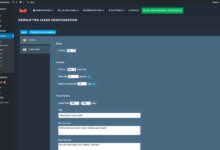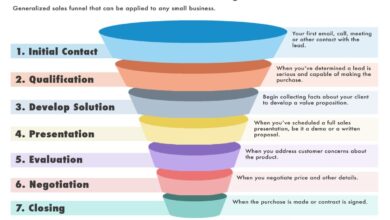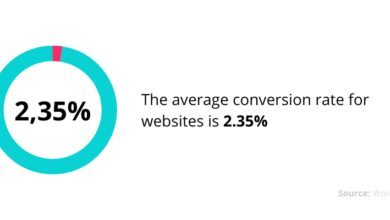Lead Generation: 7 Proven Strategies to Skyrocket Your Sales
Want more customers but not sure where to start? Lead generation is the engine that powers every successful business. It’s how you turn strangers into prospects, and prospects into paying clients. Let’s dive into the strategies that actually work.
What Is Lead Generation and Why It Matters

At its core, lead generation is the process of attracting and capturing interest in your product or service to develop a sales pipeline. Without leads, there are no conversions, no revenue, and ultimately, no growth. Whether you’re running a startup or scaling an enterprise, mastering lead generation is non-negotiable.
Defining a Lead in Modern Marketing
A ‘lead’ isn’t just a name and email. It’s someone who has shown genuine interest in what you offer—by downloading a guide, signing up for a webinar, or requesting a demo. According to HubSpot, companies that prioritize lead generation grow 2.5x faster than those that don’t (HubSpot, 2023).
- A lead can be a cold prospect just discovering your brand.
- Or a warm lead actively comparing solutions.
- The key is intent: the higher the intent, the better the lead quality.
“Lead generation is not about collecting contacts—it’s about starting meaningful conversations.” — Ann Handley, Chief Content Officer at MarketingProfs
The Evolution of Lead Generation Over Time
Lead generation has evolved from cold calling and print ads to data-driven digital strategies. In the 1990s, businesses relied on trade shows and direct mail. Today, automation, AI, and social selling dominate the landscape. The shift isn’t just technological—it’s cultural. Buyers now research independently before engaging with sales teams.
- Pre-internet era: Offline methods like flyers and telemarketing.
- Early 2000s: Email campaigns and basic landing pages.
- Present day: Omnichannel strategies using SEO, content, and retargeting.
This evolution means marketers must now focus on value-first engagement rather than aggressive selling.
Lead Generation vs. Customer Acquisition: Key Differences
While often used interchangeably, lead generation and customer acquisition are distinct phases in the buyer journey. Understanding the difference helps allocate resources effectively and measure success accurately.
Understanding the Sales Funnel Stages
The sales funnel typically includes awareness, interest, decision, and action stages. Lead generation primarily operates in the top and middle of the funnel (TOFU and MOFU), while customer acquisition covers the bottom (BOFU) and post-purchase phases.
- Top of Funnel (TOFU): Attracting strangers via blogs, SEO, and social media.
- Middle of Funnel (MOFU): Nurturing leads with email sequences and case studies.
- Bottom of Funnel (BOFU): Converting leads with demos, trials, and offers.
Effective lead generation ensures a steady flow of qualified prospects into the funnel, setting the stage for acquisition.
Metrics That Define Success in Each Stage
Different stages require different KPIs. For lead generation, common metrics include conversion rate, cost per lead (CPL), and lead-to-MQL (Marketing Qualified Lead) ratio. Customer acquisition focuses more on customer lifetime value (CLV), churn rate, and ROI.
- Conversion Rate: Percentage of visitors who become leads.
- Cost Per Lead: Total spend divided by number of leads generated.
- Lead Quality Score: Assesses how likely a lead is to convert.
Aligning these metrics across teams prevents miscommunication between marketing and sales.
Top 7 Lead Generation Strategies That Work in 2024
Not all lead generation tactics are created equal. Some deliver short-term spikes; others build sustainable pipelines. Here are seven proven strategies that consistently drive high-quality leads across industries.
1. Content Marketing with Gated Offers
Content marketing remains one of the most effective ways to generate leads. By offering valuable resources—like eBooks, whitepapers, or toolkits—in exchange for contact information, you attract motivated prospects.
- Create content that solves real problems (e.g., “How to Reduce SaaS Churn by 30%”).
- Use landing pages with clear CTAs and minimal form fields.
- Gate premium content behind email capture forms.
According to Demand Gen Report, 77% of B2B buyers download content during their research phase. This makes gated content a powerful tool for capturing early-stage leads.
“People don’t want to be sold to—they want to be helped.” — Marcus Sheridan, Author of ‘They Ask, You Answer’
2. Search Engine Optimization (SEO) for Organic Lead Flow
SEO is a long-term strategy that drives consistent, high-intent traffic. When done right, it positions your brand as a trusted authority and captures leads actively searching for solutions.
- Target buyer-intent keywords like ‘best CRM for small business’.
- Optimize on-page elements: meta titles, headers, internal linking.
- Build backlinks from reputable sites to boost domain authority.
A study by BrightEdge found that organic search drives 53% of all website traffic. For lead generation, this means a steady stream of qualified visitors without ongoing ad spend.
Tools like Ahrefs and SEMrush help identify keyword opportunities and track rankings. Combine SEO with blog content and pillar pages to maximize visibility.
3. Paid Advertising with Precision Targeting
Paid ads—especially on Google Ads and LinkedIn—deliver fast results when targeting is precise. Unlike organic methods, paid campaigns let you reach specific demographics, job titles, or even company sizes.
- Use Google Search Ads for high-intent keywords.
- Leverage LinkedIn Sponsored Content for B2B lead generation.
- Retarget website visitors with display or social ads.
For example, a SaaS company targeting HR managers can run LinkedIn ads promoting a free HR software comparison guide. The ad targets users by job title, industry, and company size, increasing relevance and conversion rates.
Always A/B test ad copy, visuals, and landing pages to improve performance over time.
Lead Generation Tools and Platforms You Need
Executing lead generation at scale requires the right technology stack. From CRM systems to automation tools, the right platforms streamline processes and improve conversion rates.
CRM Systems for Managing Leads Efficiently
A Customer Relationship Management (CRM) system is the backbone of any lead generation strategy. It stores lead data, tracks interactions, and helps sales teams prioritize follow-ups.
- Popular CRMs include Salesforce, HubSpot CRM, and Zoho.
- Features like lead scoring, pipeline views, and automation save time.
- Integration with email and marketing tools ensures seamless workflows.
HubSpot reports that businesses using CRM see a 29% increase in sales productivity. For lead generation, this means faster response times and better lead nurturing.
Email Marketing Automation Tools
Email remains one of the highest ROI channels for lead nurturing. Automation tools like Mailchimp, ActiveCampaign, and Klaviyo allow you to send personalized messages based on user behavior.
- Set up welcome sequences for new subscribers.
- Trigger emails based on actions (e.g., abandoned downloads).
- Segment audiences by interest, location, or engagement level.
According to Campaign Monitor, segmented email campaigns drive 30% more opens and 50% higher click-through rates. This level of personalization increases the chances of converting leads into customers.
“Automation doesn’t replace human touch—it enhances it.” — Christopher Penn, Marketing Data Scientist
Creating High-Converting Landing Pages for Lead Capture
Your landing page is where the magic happens. No matter how good your ad or content is, a poorly designed landing page will kill conversions. Focus on clarity, trust, and simplicity.
Essential Elements of a Winning Landing Page
A high-converting landing page includes several key components that guide visitors toward taking action.
- Clear headline that matches the ad or search intent.
- Subheadline that expands on the benefit.
- Strong call-to-action (CTA) button with action-oriented text.
- Minimal form fields (name and email often suffice).
- Social proof like testimonials or client logos.
Unbounce found that reducing form fields from four to three increased conversions by 50%. Every extra field adds friction—only ask for what you truly need.
A/B Testing for Continuous Optimization
Even small changes can have a big impact on conversion rates. A/B testing allows you to compare two versions of a page to see which performs better.
- Test headlines, CTA text, button colors, and images.
- Run tests with statistically significant sample sizes.
- Use tools like Google Optimize or VWO for easy setup.
For example, changing a CTA from “Submit” to “Get My Free Guide” can increase clicks by up to 30%. Always test one element at a time to isolate what’s driving results.
Lead Nurturing: Turning Cold Leads into Hot Opportunities
Not every lead is ready to buy immediately. Lead nurturing builds trust over time through consistent, value-driven communication. This process turns cold leads into sales-ready prospects.
Building an Effective Email Drip Campaign
An email drip campaign is a series of automated messages sent based on time or behavior. It keeps your brand top-of-mind and educates leads about your solution.
- Day 1: Welcome email with a thank you and resource link.
- Day 3: Share a customer success story.
- Day 7: Offer a free consultation or demo.
Marketo reports that nurtured leads make 47% larger purchases than non-nurtured leads. This shows the financial impact of thoughtful follow-up.
Using Behavioral Triggers to Personalize Outreach
Behavioral triggers are actions a lead takes—like visiting a pricing page or downloading a case study—that signal increased interest. Use these signals to send targeted messages.
- If a lead visits your pricing page twice, send a “Ready to Talk?” email.
- If they watch a product video, follow up with a demo offer.
- Use website tracking tools like Hotjar or HubSpot to monitor behavior.
Personalization based on behavior increases relevance and response rates. Leads feel understood, not spammed.
Measuring and Optimizing Your Lead Generation Performance
Generating leads is only half the battle. To scale success, you must measure performance and optimize based on data. Relying on gut feeling leads to wasted budgets and missed opportunities.
Key Performance Indicators (KPIs) to Track
Tracking the right KPIs gives you insight into what’s working and what needs improvement.
- Conversion Rate: % of visitors who become leads.
- Cost Per Lead (CPL): How much you spend to acquire each lead.
- Lead-to-Customer Rate: % of leads that convert to paying customers.
- Time to Conversion: Average days from lead capture to sale.
Google Analytics, CRM dashboards, and marketing platforms provide most of this data. Set up regular reporting to monitor trends.
Using Analytics Tools for Data-Driven Decisions
Tools like Google Analytics, Mixpanel, and HubSpot Analytics help you visualize user journeys and identify drop-off points.
- Analyze traffic sources to see which channels bring the best leads.
- Track user behavior on landing pages to improve design.
- Use UTM parameters to measure campaign effectiveness.
For example, if LinkedIn ads generate leads at a lower CPL than Facebook, you can reallocate budget accordingly. Data removes guesswork and drives smarter decisions.
Common Lead Generation Mistakes to Avoid
Even experienced marketers make mistakes that hurt lead quality and conversion rates. Recognizing these pitfalls early can save time, money, and reputation.
Buying Email Lists Instead of Growing Organically
Purchasing email lists might seem like a quick fix, but it often backfires. These leads aren’t interested in your brand, leading to high spam complaints and low engagement.
- Spam filters penalize senders with poor engagement.
- Low open rates damage sender reputation.
- GDPR and CAN-SPAM laws restrict unsolicited emails.
Focus on growing your list organically through value-driven opt-ins. It takes longer, but the leads are more qualified and responsive.
Ignoring Lead Qualification and Scoring
Not all leads are equal. Without qualification, your sales team wastes time chasing uninterested prospects. Lead scoring assigns points based on behavior and demographics to prioritize follow-up.
- High score = sales-ready.
- Medium score = needs nurturing.
- Low score = not a fit.
According to Gartner, companies that implement lead scoring see a 77% increase in lead conversion rates. It’s a simple system with massive impact.
What is lead generation?
Lead generation is the process of attracting and converting strangers into potential customers by capturing their interest in your product or service. This is typically done through digital channels like websites, social media, and email, using offers like free trials, eBooks, or webinars in exchange for contact information.
What are the best lead generation strategies in 2024?
The most effective lead generation strategies in 2024 include content marketing with gated offers, SEO for organic traffic, paid advertising with precise targeting, email marketing automation, social media engagement, landing page optimization, and lead nurturing through behavioral triggers.
How do you measure the success of a lead generation campaign?
You can measure success using KPIs like conversion rate, cost per lead (CPL), lead-to-customer rate, and time to conversion. Tools like Google Analytics, CRM systems, and marketing automation platforms provide the data needed to evaluate performance and optimize campaigns.
What tools are essential for lead generation?
Essential tools include CRM systems (e.g., HubSpot, Salesforce), email marketing platforms (e.g., Mailchimp, ActiveCampaign), SEO tools (e.g., Ahrefs, SEMrush), landing page builders (e.g., Unbounce, Leadpages), and analytics software (e.g., Google Analytics, Hotjar).
Why is lead nurturing important?
Lead nurturing builds trust and keeps your brand top-of-mind with prospects who aren’t ready to buy yet. Through personalized email sequences and targeted content, nurturing increases the likelihood of conversion and improves customer lifetime value.
Lead generation is the foundation of sustainable business growth. From defining what a lead is to implementing data-driven strategies, every step impacts your bottom line. The most successful companies don’t rely on luck—they build systems that attract, capture, and nurture leads consistently. By leveraging content, SEO, paid ads, automation, and analytics, you can create a predictable pipeline of high-quality prospects. Avoid common mistakes like buying lists or ignoring lead scoring, and focus on delivering real value at every touchpoint. With the right approach, lead generation becomes not just a tactic, but a growth engine.
Further Reading:









